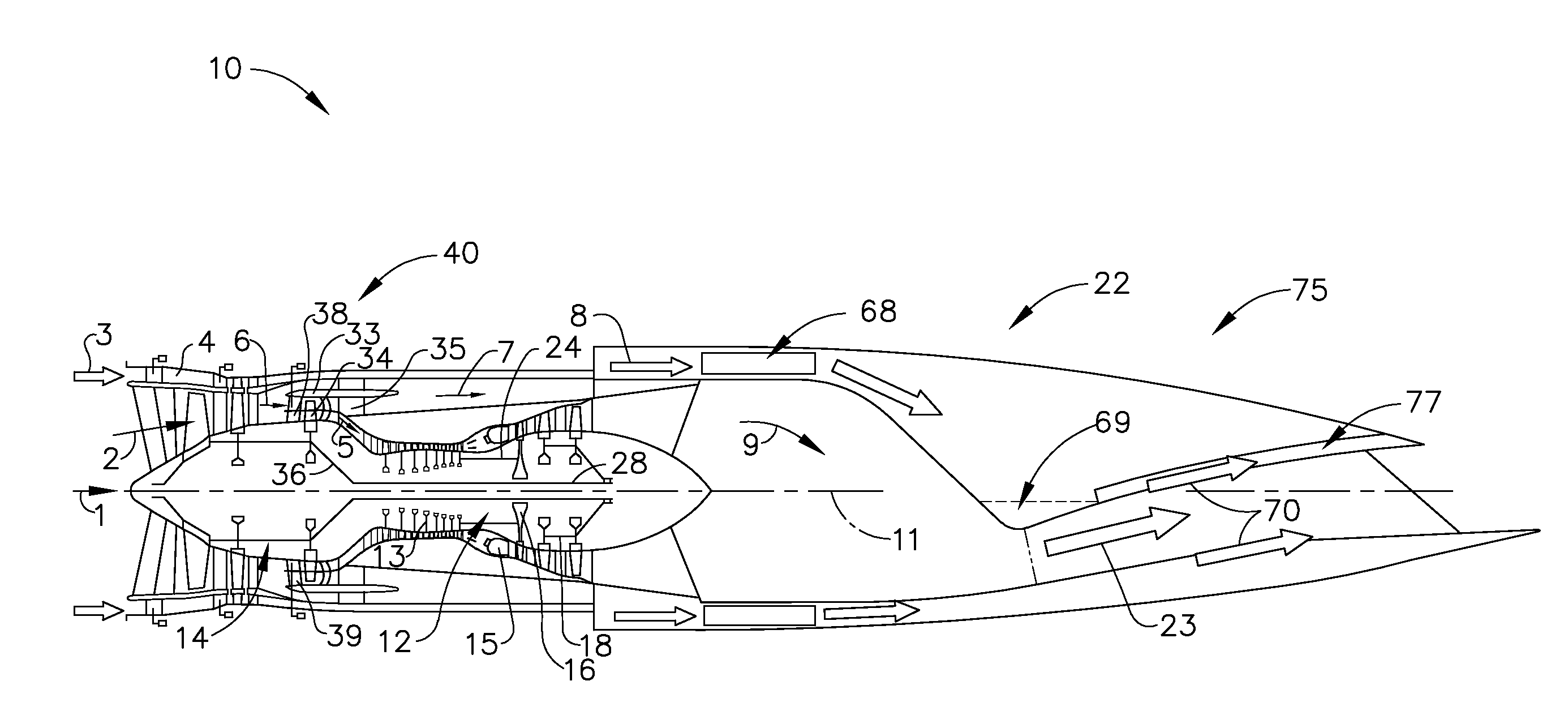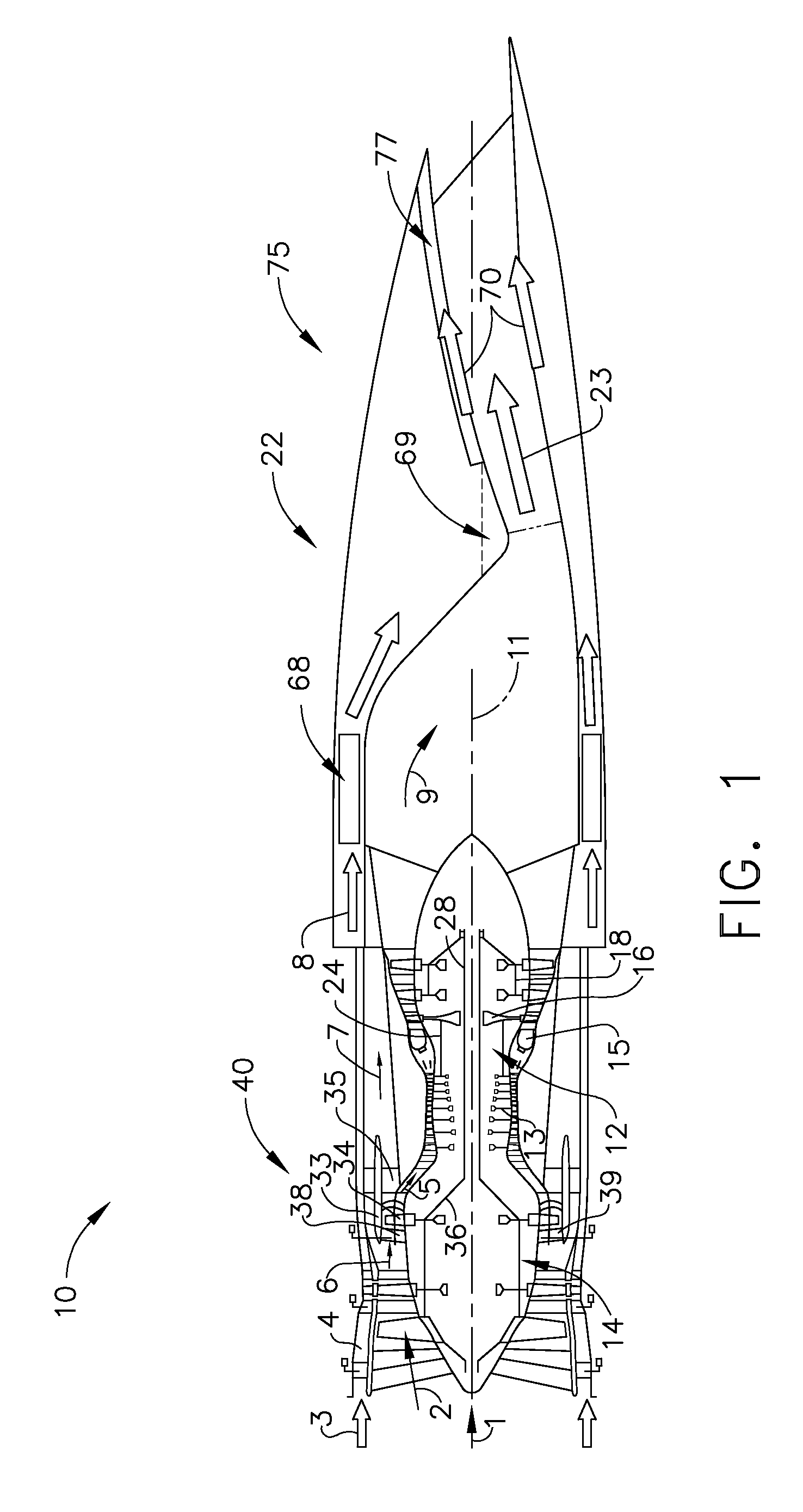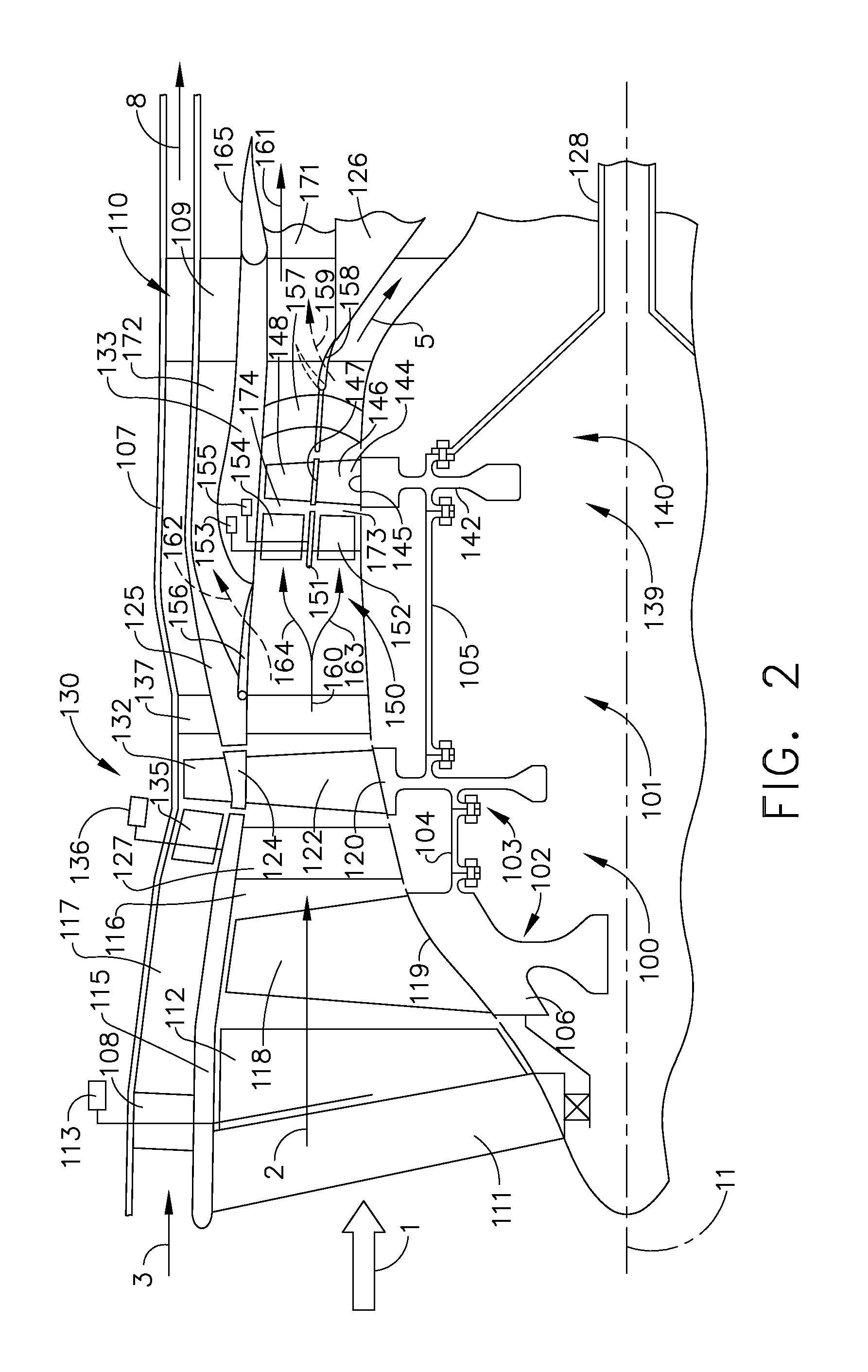Method of operating a convertible fan engine
a technology of convertible fans and engine, which is applied in the direction of machines/engines, marine propulsion, vessel construction, etc., can solve the problems of large increase in part-power installed specific fuel consumption levels, limited capacity of current turbofan engines to supply this type of mission adaptive performance, and lack of operational flexibility, so as to reduce the flow
- Summary
- Abstract
- Description
- Claims
- Application Information
AI Technical Summary
Benefits of technology
Problems solved by technology
Method used
Image
Examples
Embodiment Construction
[0021]Referring to the drawings wherein identical reference numerals denote the same elements throughout the various views, FIG. 1 is a schematic cross-sectional view of an adaptive, versatile gas turbine engine 10 according to an exemplary embodiment of the present invention. The gas turbine engine 10 has a fan 14, a core 12 comprising a compressor 13 driven by a high-pressure turbine (HPT) 16 shaft 24. The fan 14 comprises a convertible fan system 40 having a longitudinal axis 11 and is driven by a low-pressure turbine (LPT) 18 shaft 28. The HPT 16 and LPT 18 are driven by the hot combustion gases from a combustor 15. In some applications, the engine 10 may optionally have an outer flow passage 4 that receives an outer flow stream 3 and an outer fan system as described subsequently herein. The inlet air flow stream 1 enters the front of the engine 10. The fan flow stream 2 is pressurized by the fan 14 and splits into one or more bypass flow streams 6 and a core flow stream 5. The ...
PUM
 Login to View More
Login to View More Abstract
Description
Claims
Application Information
 Login to View More
Login to View More - R&D
- Intellectual Property
- Life Sciences
- Materials
- Tech Scout
- Unparalleled Data Quality
- Higher Quality Content
- 60% Fewer Hallucinations
Browse by: Latest US Patents, China's latest patents, Technical Efficacy Thesaurus, Application Domain, Technology Topic, Popular Technical Reports.
© 2025 PatSnap. All rights reserved.Legal|Privacy policy|Modern Slavery Act Transparency Statement|Sitemap|About US| Contact US: help@patsnap.com



